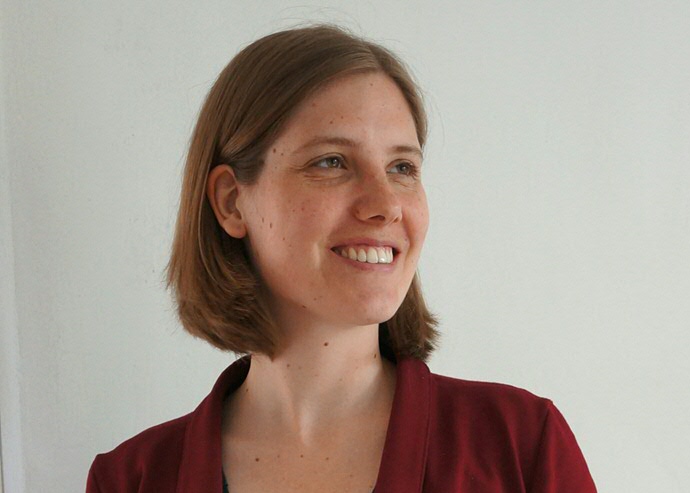Mathematical model could help judges marshal their thoughts

Different types of evidence often pass the review during a court case. But how do judges balance ‘hard’ data, for example the chances that the DNA trace comes from the suspect, against witness statements? Mathematician Charlotte Vlek has developed a solution, but not one that can be used in every case. She will defend her thesis, written for the Department of Artificial Intelligence of the UG, on 28 October 2016.
You can watch how to solve a crime virtually every evening on TV. The police collect evidence and develop various scenarios. What if X was being blackmailed by the victim? But the victim had just broken off his relationship with Y, so Y could also be the perpetrator. Evidence is needed to indicate which scenario is the most likely.
‘This is the way that the police usually work’, says UG mathematician Charlotte Vlek. It’s up to the judge to make a well-reasoned choice between the various scenarios based on the evidence. However, there is no systematic way to balance the various types of evidence, from witness statements to statistical information about DNA traces.
Scenario
Vlek has developed such an approach, based on Bayesian networks. A Bayesian network reveals which events occur within a scenario, thus enabling calculation of how likely it is that this scenario actually occurred. And, what is also important, what the individual contribution of each of the events is.
‘You can compare it to the way that a doctor makes a diagnosis’, explains Vlek. For example, a patient has a headache. You know how great the probability is that the headache is caused by flu or by a brain tumour. When you also involve other symptoms with their probabilities, you eventually end up with the most probable diagnosis.
‘Soft’ evidence
Translated to a court case, Vlek’s approach collects together the different types of evidence. ‘This has never been done before. Although the Netherlands Forensic Institute has developed a way to use a Bayesian network to explain the statistical evidence, for example the probability that a DNA trace or fingerprint comes from the suspect, it does not include the “soft” evidence from the scenarios.’
Murder diagram
Vlek has developed a procedure to process the various scenarios in a court case using diagrams. ‘You can have a murder diagram, for example, or a break-in diagram. The diagram comprises standard elements: a murder diagram, for example, has a motive, such as “blackmail” or “broken relationship”. The diagram reveals how all the elements influence each other.’ You then enter any material evidence that has been found and the model works out the probability of each of the scenarios.
Tunnel vision
Unique in Vlek’s approach is that her analysis includes all types of evidence. The steps required by this procedure ensure the most objective possible treatment of the data. ‘For example, you must use two or more scenarios to avoid tunnel vision.’
Strange results
Vlek tested her method with information from the infamous Anjumer murder case, where the owner of a bed-and-breakfast was convicted of the murder of two people, and a less well-known case from Nijmegen. ‘What I was able to show is that you can model a complex case in this way by systematically creating a network that you can analyse.’ The analysis reveals not only the probability of a certain scenario, but also the contribution that each piece of evidence within it makes. ‘You can also see where strange results come from, such as evidence that does not match the most probable scenario, or evidence that you would expect but that doesn’t exist.’
Practical problem
For the time being, her model will not be used by the courts. ‘One practical problem is that many of the probabilities used by the model are not known. You would have to guess them, and that is partly subjective. In addition, people in the Netherlands are innocent until proven guilty. But if you set the probability that the suspect is the perpetrator at zero, then you get no results. This is a fundamental problem to which I do not yet have the answer.’
More information
- Charlotte Vlek will be awarded a PhD by the University of Groningen on 28 October for research she conducted at the department of Artificial Intelligence of the institute Alice (Artificial Intelligence and Cognitive Engineering), funded by NWO. She will be continuing her career as an educational developer/lecturer at the UG.
- The title of her thesis is When stories and numbers meet in court - Constructing and explaining Bayesian networks for criminal cases with scenarios
- Contact: Charlotte Vlek.
| Last modified: | 19 February 2021 3.08 p.m. |
More news
-
23 April 2024
Nine MSCA Doctoral Network grants for FSE researchers
Nine researchers of the Faculty of Science and Engineering have received a Horizon Europe Marie Sklodowska Curie Doctoral Network grant.
-
22 April 2024
Charissa Roossien secures JTF subsidy to develop Health Tracker
Dr. Charissa Roossien (ENTEG) has successfully secured a Just Transition Fund (JTF) subsidy of 1.8 million euros to develop a Health Tracker for reliable respiratory and metabolic analysis.
-
15 April 2024
Single-molecule engineering niche in Gravitation research
With her expertise in single-molecule techniques, Dr. Kasia Tych (GBB) will contribute to a big Grvitation-research programme
